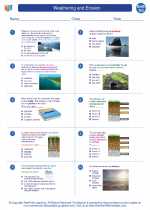Longitudinal Waves
Longitudinal waves are a type of wave in which the particles of the medium move parallel to the direction of the wave's motion. This means that the disturbance created by the wave causes the particles of the medium to oscillate back and forth in the same direction as the wave is traveling.
Sound waves are a common example of longitudinal waves. When a sound wave travels through air, the air particles vibrate back and forth in the same direction as the wave is moving, creating areas of compression and rarefaction.
Here are some key characteristics of longitudinal waves:
- Particle Movement: The particles of the medium move parallel to the direction of the wave.
- Compression and Rarefaction: Longitudinal waves create areas of compression (where particles are close together) and rarefaction (where particles are spread apart) as they travel through the medium.
- Propagation: These waves can travel through solids, liquids, and gases.
- Examples: Sound waves, seismic waves (P-waves), and waves in springs are all examples of longitudinal waves.
Study Guide
Here are some key points to remember when studying longitudinal waves:
- Understand the difference between longitudinal and transverse waves. Longitudinal waves involve particle movement parallel to the wave's direction, while transverse waves involve perpendicular particle movement.
- Be able to identify examples of longitudinal waves in real-life situations, such as the sound waves produced by a guitar string or the compression waves in a slinky toy.
- Learn about the properties of longitudinal waves, including wavelength, frequency, and amplitude, and how these properties relate to the characteristics of the wave.
- Understand how longitudinal waves propagate through different mediums, including solids, liquids, and gases, and how the speed of the wave is influenced by the properties of the medium.
- Be able to explain the role of longitudinal waves in various scientific and engineering applications, such as in medical imaging (ultrasound) and earthquake detection (seismic waves).
By mastering the concepts and properties of longitudinal waves, you'll gain a solid understanding of one of the fundamental types of wave motion in the natural world.
.◂Earth Science Worksheets and Study Guides High School. Weathering and Erosion

 Worksheet/Answer key
Worksheet/Answer key
 Worksheet/Answer key
Worksheet/Answer key
 Vocabulary/Answer key
Vocabulary/Answer key
 Vocabulary/Answer key
Vocabulary/Answer key
 Vocabulary/Answer key
Vocabulary/Answer key
